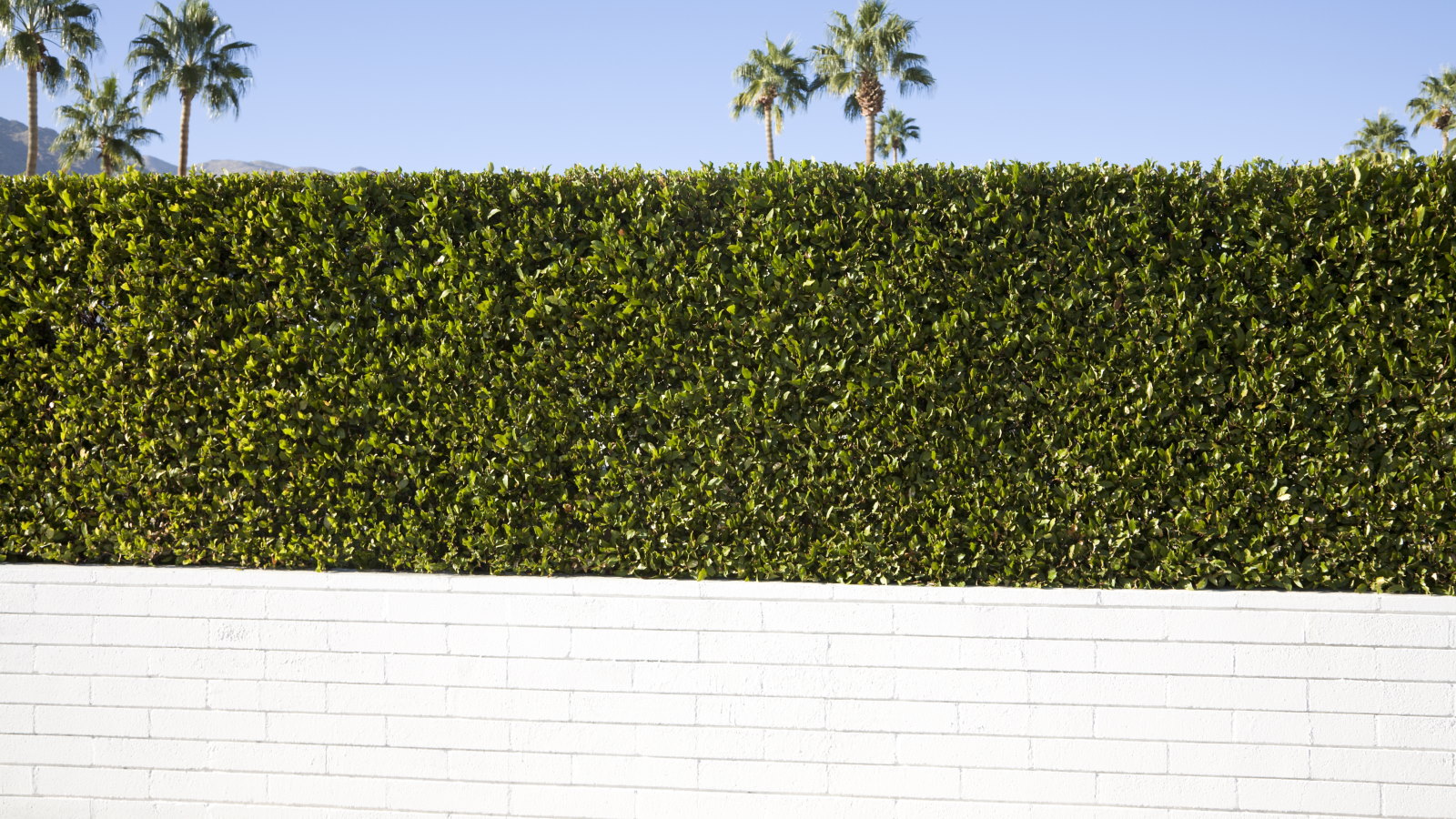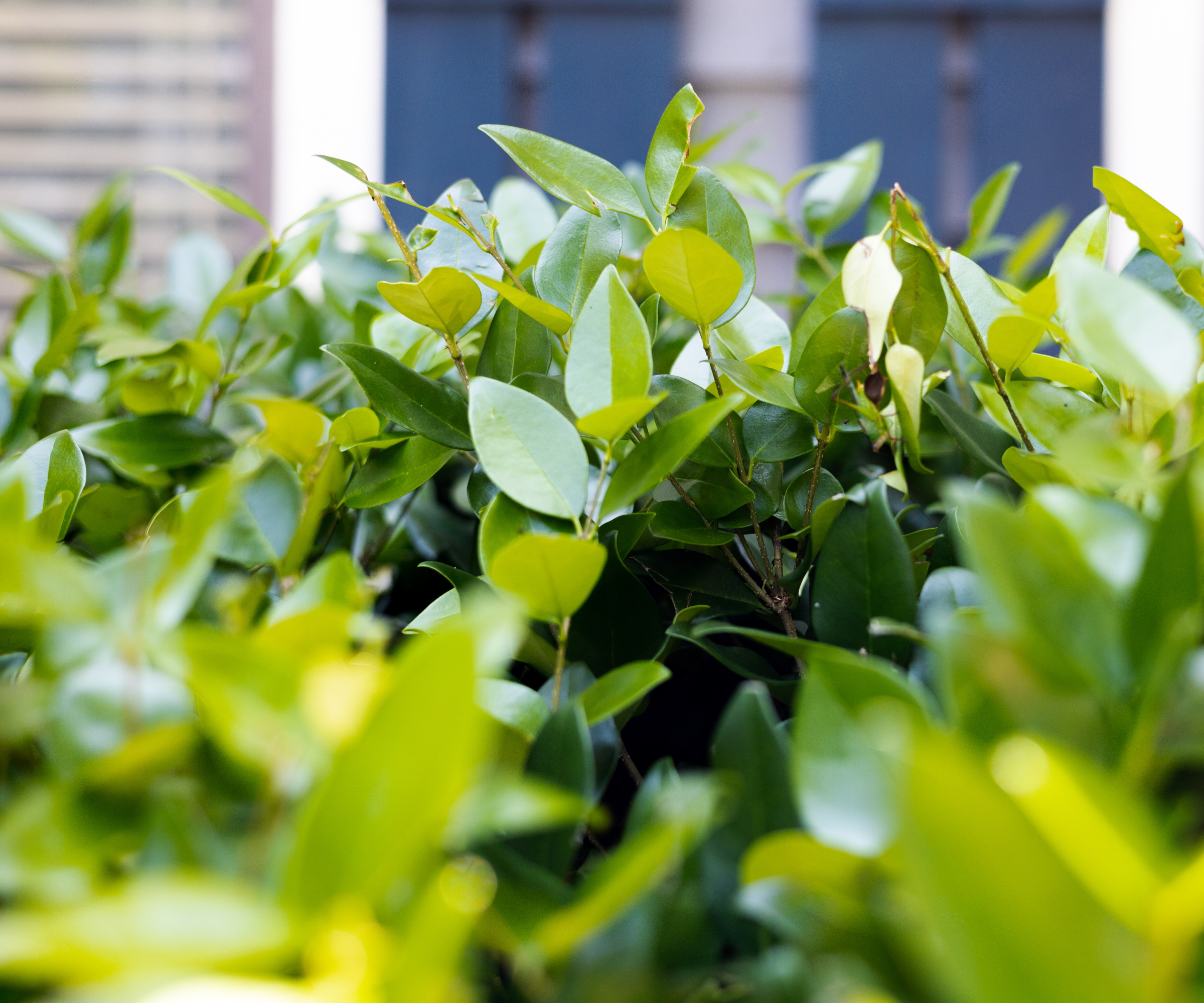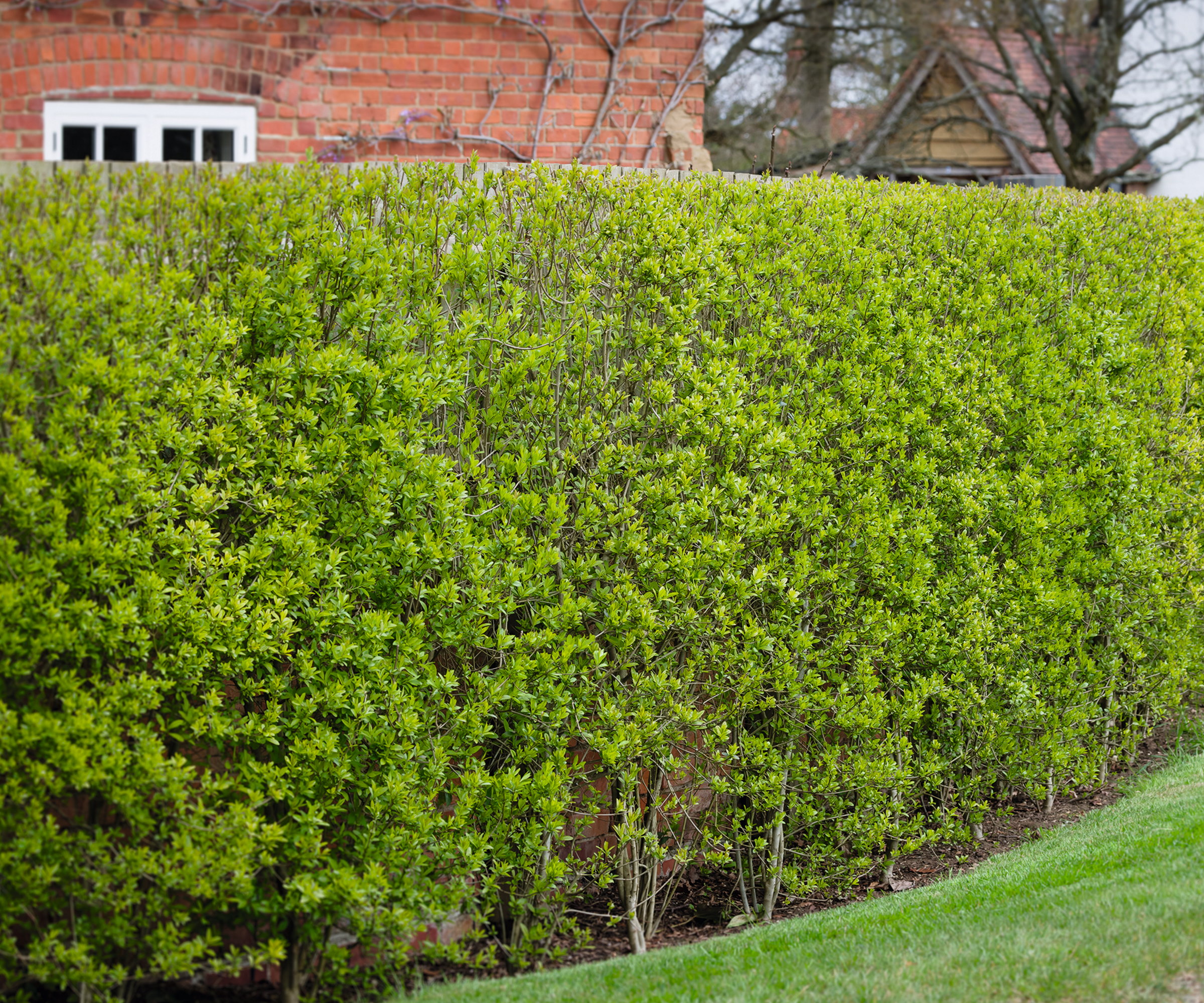
Privet has long been a popular hedging plant to provide a fast and dense screen. It is a quick-growing and versatile option for hedges, but one that needs regular pruning to keep it neat and looking its best. If you have privet in your backyard, it is important to understand how and when to prune a privet hedge so it doesn’t get out of control.
Why is privet so popular? As well as its fast and dense-growing nature, privet makes an excellent screening plant in urban areas for protection from noise, wind, and prying eyes. Its dark and glossy oval leaves create an attractive screen, while the hedge provides a habitat for wildlife and its berries are a food source for birds and small mammals.
One of the main downsides of a privet hedge is that it quickly spreads - to the extent that some types of privet are on the invasive species lists in certain states. If you do have privet on your property, pruning hedges is an annual necessity. So, when should you trim and how many times may you need to head out with the tools each year? I spoke to some experts to reveal when to prune a privet hedge and get some trimming tips.

The importance of pruning privet
Privet has been a popular choice for landscaping with hedges for many years due to its fast-growing nature. As a fast-growing hedge, the importance of pruning cannot be understated, as privet can quickly get overgrown and look wild or uneven. We start by looking at the right times to head out and trim.
When to prune a privet hedge

Privet should be pruned annually, rather than being left to get overgrown and leggy where it may start to block pathways or obstruct light into a backyard. It means knowing when to prune a privet hedge is important as regular pruning keeps privet in shape and looking at its best. A consistent trimming ensures the evergreen shrub is dense along its entirety, and encourages strong and healthy growth during the season.
In most circumstances, privet will require more than one trim each year. The best time for any major trimming comes in late winter to early spring, just before the growing season begins for the year and after the last frost. If you prune privet in this window, it will encourage healthy and vigorous regrowth when the plant starts actively growing again in spring.
Further light trimming can be done through summer to tidy up and shape the privet. This will help to keep it tight and neat - ideal if you use privet in a formal garden design.
While a light prune in summer is recommended, heavier trimming is not. Steve Swanborough, gardening expert at Henchman, advises avoiding heavy cuts in summer as it would be a pruning mistake that can ‘risk weakening your plant or stunting its growth’.
‘You should also avoid pruning privet in late fall due to the risk of frost,’ he adds. ‘Newly grown branches have not hardened enough to protect themselves from sub-zero temperatures, so it's best to wait until late winter before snipping away.’
When it comes to when to prune hedges, always consider the weather conditions. For example, never prune during periods of extreme weather such as snow and hard frost or intense summer heat. Be prepared and put pruning privet on your spring gardening and summer gardening checklist - but always wait for the ideal conditions to trim.
How to prune privet - tips for pruning privet hedges

As with any hedge pruning, clean and sharp pruning tools and safety equipment, including gloves and goggles, are essential. Any hedge trimmer blades or pruning shears must be sharp, never dull, and sterilized to avoid spreading diseases. Before cutting, lay out a sheet or tarpaulin along the base of the hedge to make clearing up the cuttings easier.
Assess the hedge first to spot any dead, diseased, or damaged branches and remove these with a pair of pruning shears. Any heavily congested areas in the center of the hedge can be thinned by removing a few selected branches to improve air circulation and lessen the risk of fungal diseases.
Heavier pruning in late winter or early spring can be done with a combination of pruning shears or loppers for older branches and hedge trimmers for shaping. It is important to regularly take steps back to assess the shape of the hedge and not to be too heavy-handed - as you shouldn’t remove more than one-third of the hedge at once.
A light summer shaping can be achieved by lightly going over the hedge with clippers to cut back the season’s growth so far and give it a neat finish.
Tall privet hedges are best cut into a tapered shape, so the base of the hedge is narrower at the top than the bottom. Angela Slater, plant expert at Hayes Garden World, says this method ‘allows more light to get to the lower branches’ and keeps the hedge healthy. She also recommends: ‘If your privet is thin in the center, hard prune one side a year to retain some privacy.’
Post-pruning, it is best practise to dispose of the clippings immediately. Jamie Shipley, gardening expert and managing director at Hedges Direct, warns: ‘If you don’t, dampness can promote fungal diseases which risk spreading to other greenery in your garden.’
As well as a quick clear-up, Jamie also recommends some other post-pruning care for privet hedges. He says: ‘I recommend feeding your privet with an all-purpose fertilizer, watering vigorously and even laying down mulch around the roots to help the hedges recover and to stimulate new growth.’
Shop hedge trimmers
A cordless hedge trimmer like this is all most people need. It has a long blade with a 3/4 in. cut capacity for tougher, larger hedges, plus a rotating rear handle.
This cordless hedge trimmer from Makita has a 24” blade and is lightweight at just under six pounds, making it a comfortable cutting tool for any hedges.
This long 25" hedge trimmer is perfect for cutting large hedges made of thick wood. It also rotates, so you can cut vertical hedges without holding up the trimmer at an awkward angle, and has a two-speed range selector.
FAQs
When should you not cut a privet hedge?
It is not advisable to prune a privet hedge in the fall. Doing so promotes a flush of new growth that will not harden off in time and be damaged by frosts. This will leave the hedge increasingly susceptible to pests and diseases. You should also not prune when birds are nesting in the hedge. Inspect the hedge for signs of nesting birds and, if they are there, delay pruning until the chicks have left the nest.
Laurel is another popular hedging plant that needs regular pruning to keep any desired shape and prevent this fast-growing shrub from getting out of control. It is a hedging plant that quickly forms a thick screen, but can reach 15-20ft if left to its own devices. Regular trimming keeps the hedge compact and attractive and you can see when and how to prune laurel in our thorough guide.







